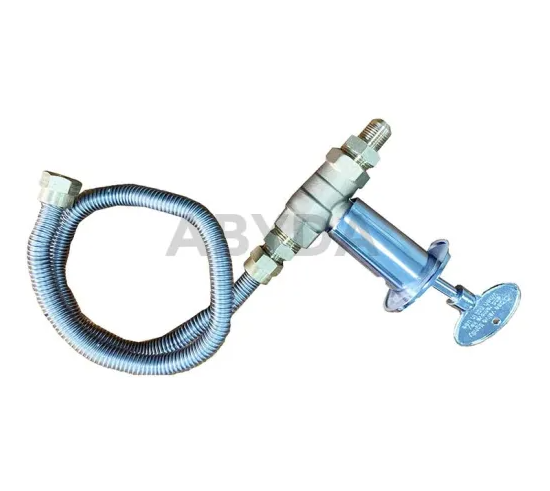LPG (liquefied petroleum gas) is a popular choice for fueling various appliances and equipment, including stoves, heaters, and grills, due to its efficiency, affordability, and convenience. However, to ensure safe and controlled usage of LPG, it's essential to incorporate a regulator into the system.

1. Function of an LPG Regulator:An LPG regulator serves as a crucial component in the LPG system, responsible for regulating the flow and pressure of gas from the cylinder to the appliance. Its primary function is to reduce the high pressure of the LPG stored in the cylinder to a safe and consistent pressure suitable for the appliance's operation. By maintaining a steady flow of gas at the desired pressure, the regulator ensures efficient combustion and optimal performance of the appliance while preventing damage or malfunction due to excessive pressure.
2. Components of an LPG Regulator:An LPG regulator typically consists of the following components:
3. Working Principle of an LPG Regulator:The working principle of an LPG regulator is based on the concept of pressure reduction and control. When the regulator is attached to the LPG cylinder and the valve is opened, high-pressure gas from the cylinder enters the regulator through the inlet connection. The diaphragm inside the regulator senses this high pressure and moves upward, compressing the spring-loaded valve and allowing gas to flow through the regulator.
As gas flows through the regulator, the diaphragm continuously adjusts the position of the valve to maintain the desired outlet pressure. If the outlet pressure exceeds the set limit, the excess gas is released through the valve to prevent overpressure. Conversely, if the outlet pressure drops below the set limit, the valve closes to maintain the desired pressure.
4. Importance of an LPG Regulator:An LPG regulator plays a critical role in ensuring the safe and efficient operation of LPG-powered appliances. By regulating the flow and pressure of gas from the cylinder to the appliance, the regulator helps prevent accidents, such as gas leaks, fires, or explosions, that may occur due to excessive pressure or uncontrolled gas flow. Additionally, the regulator helps optimize fuel consumption and appliance performance by delivering gas at the appropriate pressure for combustion.
An LPG regulator is an indispensable component of the LPG system, providing essential pressure regulation and control for safe and reliable operation of LPG-powered appliances. Its ability to maintain consistent gas flow and pressure ensures efficient combustion, optimal appliance performance, and enhanced safety for users. By understanding the function and working principle of an LPG regulator, users can appreciate its importance and take appropriate measures to maintain its proper operation.
Explore more:API Piston 6 Inch Globe Shut off Valve for Steam ProjectWhat are Conveyor Modular Belts?How to Replace Panasonic Npm H16 Vacuum Filter?Juki SMT Feeder: Superior vs. Standard Options ExplainedWhat You Need to Know About Measuring Chain PitchWhen to Use progressive die design?SMT YAMAHA FEEDER Manufactuer in China





Comments
Please Join Us to post.
0